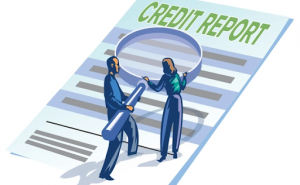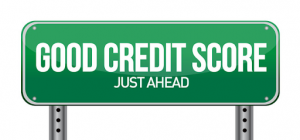How to Rebuild Your Damaged Credit
Many of us have damaged our credit in the past unknowingly. We have done this by using over 50% of our credit limit, maxing out our credit card or requesting increases. Even by applying for several credit accounts at once, making late payments or as simple as missing a parking ticket or medical bill. However, it is important to know that you can rebuild your damaged credit. Through learning about credit history, organizing finances, making a financial plan and using credit rebuilding product, it is achievable.
– Learn – about your credit history
History often enables us to learn from our mistakes and to create a path for moving forward. Your credit report represents your financial history and can be used in the same manner. By reviewing your credit report, you can highlight your negative tendencies such as missing or making late payments and determine which areas to focus on.
Another important reason for checking your credit report is to look for errors and fraudulent accounts. Six years ago when I first reviewed my credit report, I found a loan which was taken out by my sibling was also appearing on my report. I was able to correct this by contacting the credit bureau and disputing the items. Removing an incorrect item from your credit report is one of the easiest ways to give your score a bump.
You can obtain a free copy of your credit report through TransUnion or Equifax within Canada. Once you have learned about your credit history and highlighted some key areas to improve, it is time to organize your finances.

– Organize – your finances
One of the best tools you can use to organize your finances is a budget. A budget is essentially a plan for your finances (income and expenses) that gives you a screenshot of your financial situation and capabilities.
Your budget should entail your income(s) and your expenses such as rent, insurance, phone/utility bills, etc. By creating a budget, you can determine and set aside the percentage of your income that is required to pay your monthly expenses. As well as, calculate the percentage of your income that you are able to save or use to catch up on your payments with old debt.
If you do not have enough money to cover your expenses, you can use your budget to prioritize your payments in the areas that are most important to you. If you are unable to make required payments on bills, make sure to contact your creditors and request a payment plan. Alternatively you can look into Installment and consolidation loans in order to reduce your monthly payments.
My personal budget also includes an allowance to myself. This is the amount I allow myself in order to enjoy the small things in life such as going out for an occasional dinner with friends, going to the movies with my partner, or saving up and going on vacation. With a responsible budget, you can rebuild your credit AND enjoy your life.
– Plan – your finances
Your financial plan should include 1- paying all future bills on time. 2- catching up with old debt. 3- understanding credit utilization ratio. 4- practicing responsible financial habits.
1- Paying all future bills on time.
You can use your budget in order to ensure you have set aside enough money to pay your bills on time. If you have difficulty remembering your payment dates, set alarms on your phone and computer calendars. Schedule the payments for the same day of the month.
2- Catching up with old debt.
Your payment history is one of the largest factors in determining your credit history. In order to improve your credit score, you need to bring your accounts up to date. However, in most instances, it can be difficult for people facing financial hardship to suddenly pay off their old debt and bring their accounts current.
If you can not afford to pay off your old debt all at once, take the initiative to contact your creditor. Your creditor may work with you on a payment plan. Be clear about your situation and capabilities. Most credit agencies are willing to work with you and create payment arrangements.
3- Understanding credit utilization.
A crucial aspect to creating a financial plan and reducing your debt to credit ratio. High credit utilization ratios may have a negative impact on your credit score. Your goal should be to reduce your debt to 25-30% of your credit. If one of your credit lines has a 80% utilization rate and others are much lower, focus on paying down the one with a high utilization rate. Since I personally began monitoring my debt to credit ratio and worked on reducing it, I have been offered several products and limit increases by my creditors. Increasing your credit limit is another factor that will help you with improving your credit utilization ratio.
4- Practicing responsible financial habits.
Having learned about your credit history, organized your budget and created a financial plan, you should focus on making responsible financial decisions and creating good financial habits. Habits such as living within your means, setting aside an emergency fund and savings for the future. You can use your budget to help set aside funds for a rainy day. That way you will be less inclined to miss payments or take on additional debt.
– Build – your credit
The stage is now set. You learned about past mistakes by reviewing your credit report and have an understanding of where to focus. By creating a budget to help you stay on track with all your future bills and to create savings. Having become responsible financially and living within your means. But you are still unable to improve your credit enough to attain your desired credit score. Your solution is to build credit. You can build credit by taking on additional credit accounts.
Unfortunately, most credit providers require a strong credit score in order to do business with you. In this case, you can use secured credit cards or installment loans as a credit building product. These products were designed for individuals with subprime credit and are more lenient when it comes to approvals. By taking out a secured credit card or an installment loan and ensuring that all payments are made on time, you will be fast tracking the process for rebuilding your credit.
Now all that’s left is to be patient. It can take months and up to years before you reach your desired credit score. However, if you continue following these steps, it will only be a matter of time until you are there.

At PYLO Finance Inc., we believe that damaged credit is not the end of the line. Our team is available if you have questions about about how a loan can help provide you with positive reporting on your credit history and rebuild your rating.



